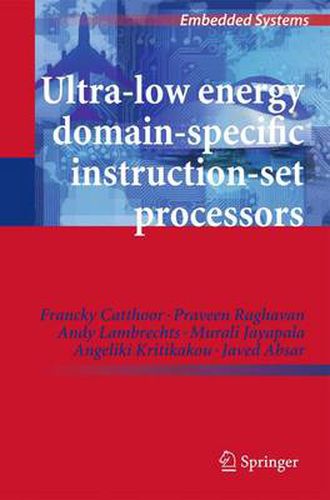Readings Newsletter
Become a Readings Member to make your shopping experience even easier.
Sign in or sign up for free!
You’re not far away from qualifying for FREE standard shipping within Australia
You’ve qualified for FREE standard shipping within Australia
The cart is loading…






This title is printed to order. This book may have been self-published. If so, we cannot guarantee the quality of the content. In the main most books will have gone through the editing process however some may not. We therefore suggest that you be aware of this before ordering this book. If in doubt check either the author or publisher’s details as we are unable to accept any returns unless they are faulty. Please contact us if you have any questions.
Modern consumers carry many electronic devices, like a mobile phone, digital camera, GPS, PDA and an MP3 player. The functionality of each of these devices has gone through an important evolution over recent years, with a steep increase in both the number of features as in the quality of the services that they provide. However, providing the required compute power to support (an uncompromised combination of) all this functionality is highly non-trivial. Designing processors that meet the demanding requirements of future mobile devices requires the optimization of the embedded system in general and of the embedded processors in particular, as they should strike the correct balance between flexibility, energy efficiency and performance. In general, a designer will try to minimize the energy consumption (as far as needed) for a given performance, with a sufficient flexibility. However, achieving this goal is already complex when looking at the processor in isolation, but, in reality, the processor is a single component in a more complex system. In order to design such complex system successfully, critical decisions during the design of each individual component should take into account effect on the other parts, with a clear goal to move to a global Pareto optimum in the complete multi-dimensional exploration space.
In the complex, global design of battery-operated embedded systems, the focus of Ultra-Low Energy Domain-Specific Instruction-Set Processors is on the energy-aware architecture exploration of domain-specific instruction-set processors and the co-optimization of the datapath architecture, foreground memory, and instruction memory organisation with a link to the required mapping techniques or compiler steps at the early stages of the design. By performing an extensive energy breakdown experiment for a complete embedded platform, both energy and performance bottlenecks have been identified, together with the important relations between the different components. Based on this knowledge, architecture extensions are proposed for all the bottlenecks.
$9.00 standard shipping within Australia
FREE standard shipping within Australia for orders over $100.00
Express & International shipping calculated at checkout
This title is printed to order. This book may have been self-published. If so, we cannot guarantee the quality of the content. In the main most books will have gone through the editing process however some may not. We therefore suggest that you be aware of this before ordering this book. If in doubt check either the author or publisher’s details as we are unable to accept any returns unless they are faulty. Please contact us if you have any questions.
Modern consumers carry many electronic devices, like a mobile phone, digital camera, GPS, PDA and an MP3 player. The functionality of each of these devices has gone through an important evolution over recent years, with a steep increase in both the number of features as in the quality of the services that they provide. However, providing the required compute power to support (an uncompromised combination of) all this functionality is highly non-trivial. Designing processors that meet the demanding requirements of future mobile devices requires the optimization of the embedded system in general and of the embedded processors in particular, as they should strike the correct balance between flexibility, energy efficiency and performance. In general, a designer will try to minimize the energy consumption (as far as needed) for a given performance, with a sufficient flexibility. However, achieving this goal is already complex when looking at the processor in isolation, but, in reality, the processor is a single component in a more complex system. In order to design such complex system successfully, critical decisions during the design of each individual component should take into account effect on the other parts, with a clear goal to move to a global Pareto optimum in the complete multi-dimensional exploration space.
In the complex, global design of battery-operated embedded systems, the focus of Ultra-Low Energy Domain-Specific Instruction-Set Processors is on the energy-aware architecture exploration of domain-specific instruction-set processors and the co-optimization of the datapath architecture, foreground memory, and instruction memory organisation with a link to the required mapping techniques or compiler steps at the early stages of the design. By performing an extensive energy breakdown experiment for a complete embedded platform, both energy and performance bottlenecks have been identified, together with the important relations between the different components. Based on this knowledge, architecture extensions are proposed for all the bottlenecks.